This post is also available in: Italian
Sardinia, with its wonderful beaches and 1.120-mile coastline, also features a rugged, wild and rich hinterland full of botanical surprises; still, it’s not is a land of historic gardens and ancient nurseries by tradition. In fact, gardens and nurseries began to appear only during the 1960s, especially with the arrival of tourists and the related construction of hotels, villages, residential areas and resorts on the sea. We’ve thus managed to include three excellent nurseries in this itinerary, which runs from Olbia – the port of call for many ferryboat lines, to Sassari – a town of medieval origin, full of noble abodes, exquisite churches, and olive groves, then eventually reach one of the richest areas of Sardinia: the Nuraghi. This itinerary actually goes as far as Nuoro, also known as the “Sardinian Athens” thanks to its thriving cultural heritage of the XIX-XX centuries (Salvatore and Sebastiano Satta, Francesco Ciusa, and Grazia Deledda were all from this Sardinian city).
You will thus discover some very interesting nurseries, and their plants, such as camellias, succulent species, Mediterranean, subtropical and tropical varieties, citrus and fruit trees, and some other great sensations…
You should also spend some time in the Maddalena Archipelago, namely on the islands of Maddalena and Caprera – true jewels rich in uncontaminated nature.
The nurseries
The map shows the nurseries and other locations included in our suggested itinerary. Distances are also mentioned, in order to make it easier and more practical for you to make your choice and save petrol and time.
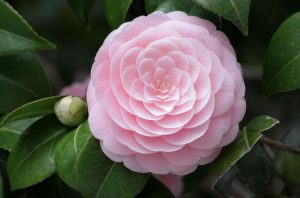
La Fumosa Nursery, in Tempio Pausania (Olbia-Tempio): This nursery features a special collection of camellias. Thanks to the quality of the local spring water and the climatic conditions of Tempio, this nursery produces a particularly flourishing quantity of those acidophilic plants.
Distances to other nurseries: 26 miles to Paolo Calbini Succulente – 44 miles to La Rosa dei Venti – 84 miles to Saba Nursery.
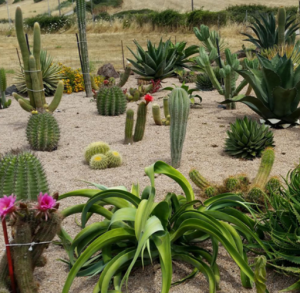
Paolo Calbini Nursery – succulent plants, in Tergiu (SS): A small family-run farm that deals with reproduction and distribution of succulent plants – Trichocereus in particular, painstakingly hybridized and multiplied, in order to obtain the perfect colours.
Distances to other nurseries: 20,8 miles to La Rosa dei Venti – 26 miles to La Fumosa Nursery – 94 miles to Saba Nursery.
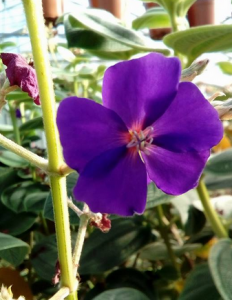
La Rosa nei Venti, in Rudas Alghero (SS): this Sardinian nursery produces Mediterranean species. The company is specialized in the production of both Mediterranean, tropical and subtropical plants suitable for the Mediterranean gardens.
Distances to other nurseries: 93,2 miles to Saba Nursery – 44 miles to La Fumosa Nursery – 20,8 miles to Paolo Calbini Nursery.
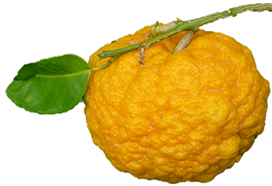
Saba Nursery/ Vita Verde, in Orosei (NU This nursery was established by Sergio Saba and currently offers citrus, olive trees, vines, and fruit trees. In particular, it also offers the very rare “Pompìa” (Citrus limon var. “Pompia“): the ancient lemon variety endemic to Sardinia, which is probably a hybrid between cedars and lemon trees, or between cedars and grapefruits; it was re-discovered at the end of the 1990s. This nursery also cultivates some local varieties selected in collaboration with the Biodiversity Committee of Dorgali; among the vines, there’s an excellent white muscat, selected with the help of a special committee from the city of Lula.
Distances to other nurseries: 83,8 miles to La Fumosa Nursery – 94 miles to Paolo Calbini Nursery – 93,2 miles to La Rosa dei Venti.
From here, you may want to proceed on the Second Sardinian itinerary, travelling to I Campi Nursery (70,8 miles away).
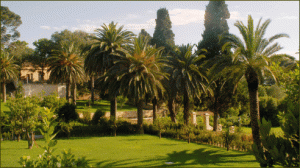
Parco di Monserrato, in Sassari: this park of Sassari has always been the largest of the noble properties in the whole city. The ancient farmhouse is still visible today and has been recently restored and refitted as a refreshment area for visitors. The park was built in 2007, on a natural slope and decorated with walls, artificial inclines, and some escarpments. It can be accessed all year round, also thanks to several external sheltered structures, such as a quaint pergola.

Parco Nazionale dell’Arcipelago di La Maddalena: Established in 1994, La Maddalena Archipelago National Park is a marine reserve, namely a galaxy of islands, islets, and rocks shaped by the strong mistral wind and the Strait of Bonifacio sea current. The Park covers about 50.000 acres between the land and the sea, as well as a 112-mile coastline stretching from the Strait of Bonifacio and including the entire La Maddalena Archipelago; the whole protected area is the first national park of Sardinia, and the only one in Italy encompassing the territory of a single municipality. Among the main islands of the archipelago, there’s that of Caprera (featuring General Garibaldi’s house-museum), and the island of Santa Margherita. Those two islands offer exceptional birdwatching opportunities, especially when it comes to Scopoli’s shearwaters, Manx shearwaters, the storm petrels, European shags, Corsican Gulls, and common terns.
All the other species enjoy the specific protection of the Wild Birds Directive (79/409) but the yellow-legged gulls.
Other parks, oasis, nature reserves and similar attractions are listed on: www.italianbotanicalheritage.com. Feel free to use the comprehensive filters in the pull-down menus to explore your area of interest and discover many more interesting locations.
This post is also available in: Italian


Leave a Reply